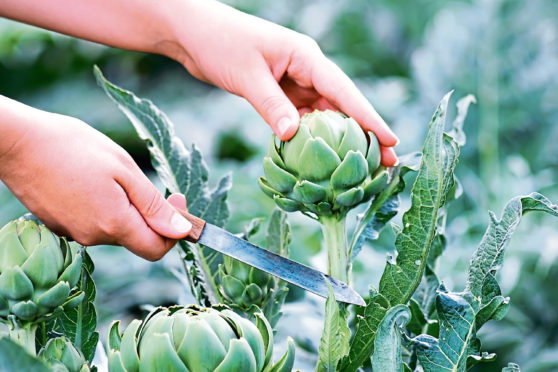
May is the month when all the hard work of preparing the soil, growing seedlings and getting them into the ground begins to bear fruit. If everything has gone as planned, then the veg patch should be flourishing.
Now is the time to resow quick-growing salads and herbs in order to keep up a regular supply but even though the soil and daytime temperatures are getting warmer we can still get frosts, so keep some layers of fleece or cloches close at hand and cover anything vulnerable on nights when the temperature drops.
To get the most out of your vegetable patch it is worth looking at ways to fill the gaps between slow-growing veg such as cabbages and cauliflowers with edibles that will be ready to eat in a few months.
In the greenhouse this can include setting out basil plants around the base of tomatoes, while outside you might want to try growing rocket or spinach in any bare gaps.
The ultimate method of intercropping is known as three sisters planting and it was developed by the Iroquois people of North America more than 1,000 years ago.
It involves growing sweetcorn, climbing beans and pumpkins on the same patch of soil and it is still used today to squeeze every last bit of goodness out of gardens.
The idea is that the sweetcorn provides support for the beans which in turn fix nitrogen into the soil, while the leaves of the pumpkins, which are planted around the edge of the plot, create a sort of living mulch, suppressing weeds and preventing the soil from drying out. Much as I love the ordered rows of a traditional vegetable patch, I do think this tangled way of growing food also has great benefits and you can take it even further by dotting vegetables around the garden instead of growing them all together.
This makes it harder for pests and diseases to travel from one plant to the next and if you add lots of annual flowers into the mix then you’ll have all the pollinators your need to ensure bumper crops.
One of my favourite vegetables for growing in the flower garden is the artichoke. These handsome plants add structure among the flowers and the artichokes themselves are quite beautiful. In fact it can be hard at times to decide whether to pick them for the vase or to pop them into a pot of boiling water.
What’s in bloom?
The pink and white flowers of apple blossom are one of the highlights of the month and in many parts of Scotland old orchards are now covered in a soft froth of flowers. Bees love blossom and in turn they pollinate the flowers, helping to ensure a good crop. To protect that future harvest, cover trees with fleece on nights when frost is forecast.

Enjoy the convenience of having The Sunday Post delivered as a digital ePaper straight to your smartphone, tablet or computer.
Subscribe for only £5.49 a month and enjoy all the benefits of the printed paper as a digital replica.
Subscribe